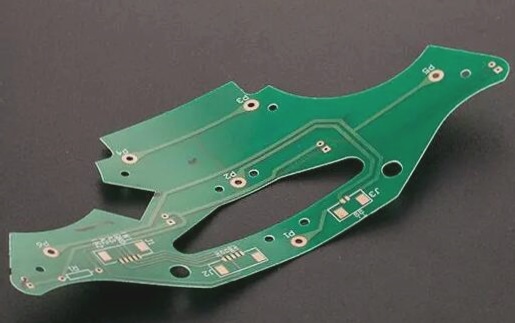3. Reel Linkage Type Selective Plating
The pins of electronic components, such as connectors, integrated circuits, transistors, and flexible printed circuits, utilize selective plating to achieve optimal contact resistance and corrosion resistance. This electroplating method can be performed manually or automatically. As individually plating each pin is prohibitively expensive, batch processing is typically employed. Generally, the metal foil, rolled to the required thickness, undergoes punching at both ends, followed by chemical or mechanical cleaning. Subsequently, selective plating materials such as nickel, gold, silver, rhodium, button or tin-nickel alloy, copper-nickel alloy, nickel-lead alloy, etc., are continuously electroplated. In the electroplating process of selective plating, a layer of resist film is initially applied to the parts of the metal copper foil board that do not require electroplating, enabling electroplating solely on the designated areas of the copper foil.
4. Brush Plating
Another method of selective plating known as “brush plating” is utilized. This technique involves electrodeposition, where not all parts are submerged in the electrolyte during electroplating. Only specific areas undergo electroplating, leaving the remainder unaffected. Typically, rare metals are plated onto designated sections of the printed circuit board, such as board edge connectors. Brush plating finds more application in the repair of discarded circuit boards within electronic assembly workshops. It involves wrapping a special anode (a chemically inactive anode, such as graphite) in an absorbent material (such as a cotton swab) to transport the electroplating solution to the desired locations for electroplating.
As a professional FPC soft board manufacturer, WellCircuits Limited is honored to have collaborated with many of you. At WellCircuits Limited, we are always eager to assist our new customers in any way possible. Please do not hesitate to reach out to us at any time should you have any questions.
The pins of electronic components, such as connectors, integrated circuits, transistors, and flexible printed circuits, utilize selective plating to achieve optimal contact resistance and corrosion resistance. This electroplating method can be performed manually or automatically. As individually plating each pin is prohibitively expensive, batch processing is typically employed. Generally, the metal foil, rolled to the required thickness, undergoes punching at both ends, followed by chemical or mechanical cleaning. Subsequently, selective plating materials such as nickel, gold, silver, rhodium, button or tin-nickel alloy, copper-nickel alloy, nickel-lead alloy, etc., are continuously electroplated. In the electroplating process of selective plating, a layer of resist film is initially applied to the parts of the metal copper foil board that do not require electroplating, enabling electroplating solely on the designated areas of the copper foil.
4. Brush Plating
Another method of selective plating known as “brush plating” is utilized. This technique involves electrodeposition, where not all parts are submerged in the electrolyte during electroplating. Only specific areas undergo electroplating, leaving the remainder unaffected. Typically, rare metals are plated onto designated sections of the printed circuit board, such as board edge connectors. Brush plating finds more application in the repair of discarded circuit boards within electronic assembly workshops. It involves wrapping a special anode (a chemically inactive anode, such as graphite) in an absorbent material (such as a cotton swab) to transport the electroplating solution to the desired locations for electroplating.
As a professional FPC soft board manufacturer, WellCircuits Limited is honored to have collaborated with many of you. At WellCircuits Limited, we are always eager to assist our new customers in any way possible. Please do not hesitate to reach out to us at any time should you have any questions.




